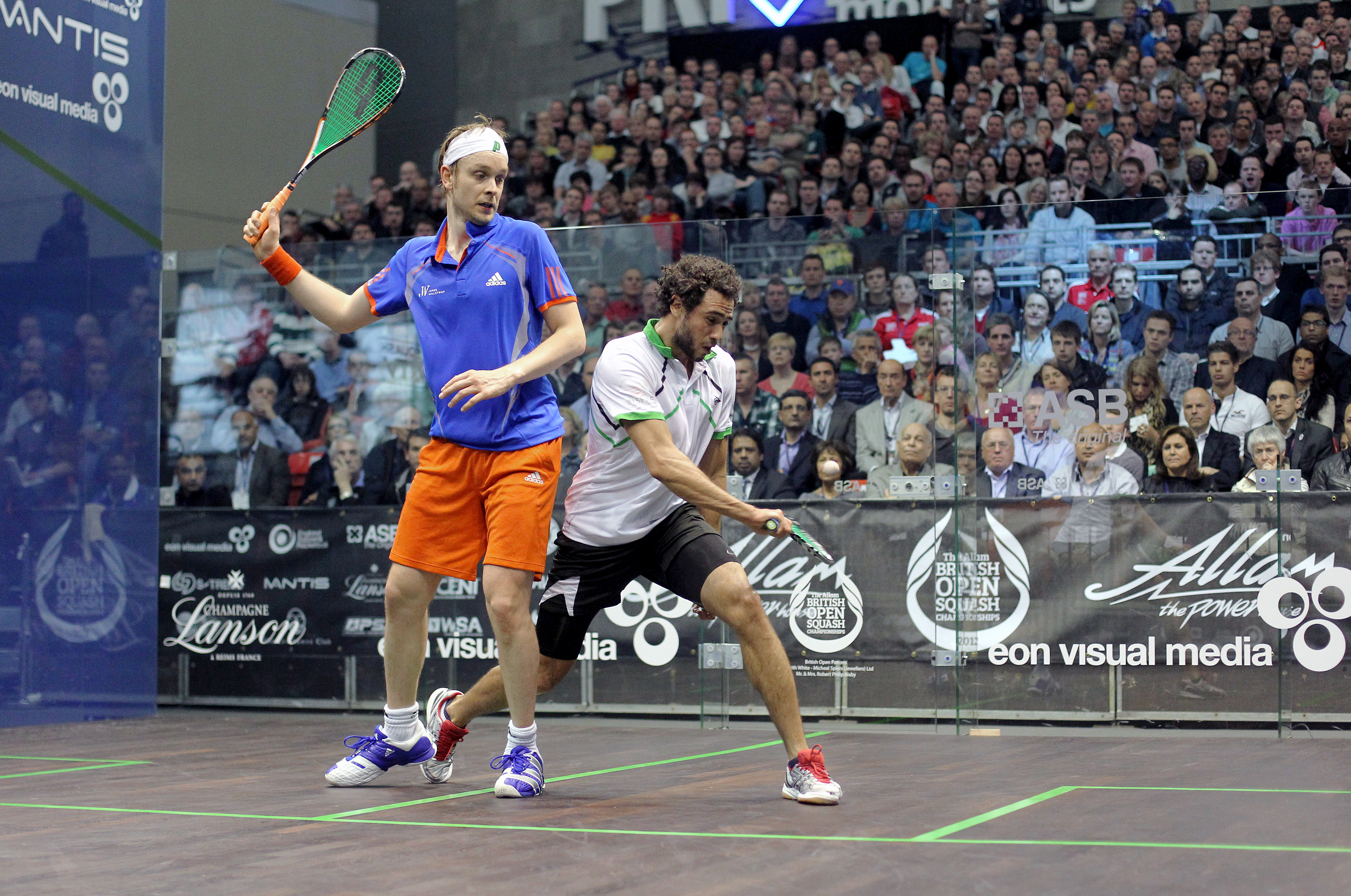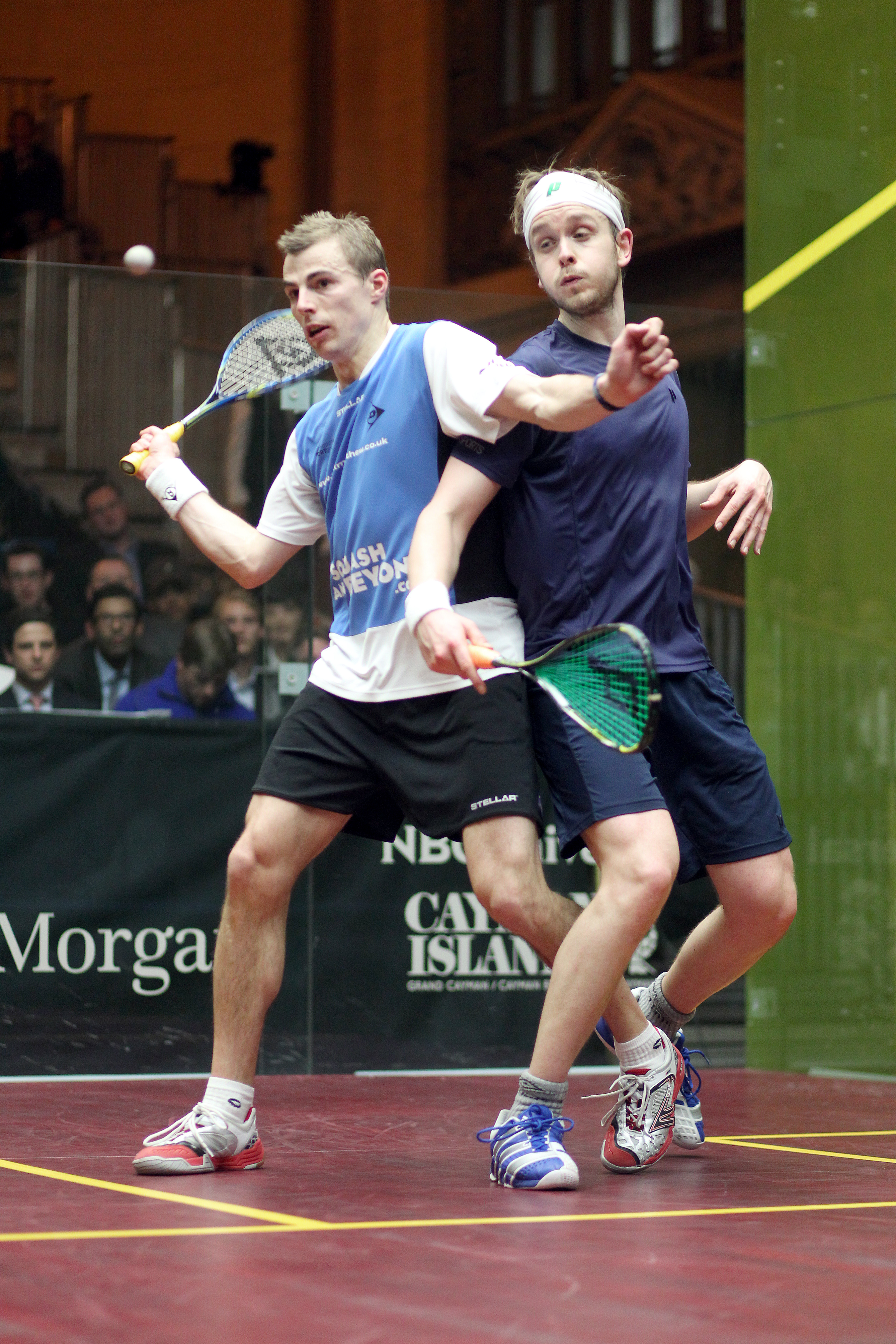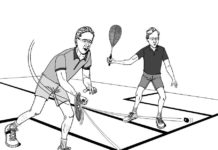By Barry Faguy, WSF Referees and Rules Committee
That doesn’t sound like much of a good idea, does it? It’s not a good idea for any restaurant to do that, but when it comes to Squash, it pretty much has to be done.
It’s an appropriate metaphor for Squash because the image of putting water in your wine provides a good image of the single, most characteristic trait that allows play to continue in the face of obstacles. It speaks of compromises—a realization by the striker that the Pollyanna world allowed by the rule book is unrealistic. The nature of the game is such that we cannot insist on perfect freedom each time to see the ball, to access the ball, to swing at the ball, and to hit the ball directly to the front wall (the so-called four freedoms).

The Reality
Everyone realizes that interference is inevitable—and frequent. In a relatively confined space with a long rackets, a high speed ball, and fast-moving players both vying for the best position, you’re going to see countless instances where the striker’s freedoms are not granted 100%—probably just as many where they aren’t granted 50%, and a whole bunch where the number is 0%. Yet, the rally often continues…uninterrupted.
Furthermore, as was noted in a previous article, we can, without fear of contradiction, state that any ‘legitimate’ interference is always the fault of the non-striker. There is no one else on the court to blame. Quite simply, the interference exists because the non-striker either didn’t move fast enough, or didn’t move in the right direction. A return was made that the non-striker was not able (or didn’t try!) to clear. A knee-jerk conclusion would be to demand that a Stroke be assessed against the non-striker who causes such interference—but that truly is an unrealistic conclusion that would make the game unplayable.
Conscious of this reality, the rules throw in a few other criteria for consideration be- fore a decision like that can be made, among which are the actual amount of the interference, the actual effect of the interference, the effort of the non-striker to clear, the potential for a good return or a winning return, reasonableness of the swing, whether the striker played through the interference or not—and finally, the focus of our column here today, the effort by the striker to play the ball in the face of that interference.
Let’s face it—far and away, we depend on the striker to ensure this continuity of play. To insist that the non-striker always hit a ball that leaves him or her clear, or that can be cleared, is simply unrealistic. It’s just about impossible to always be out of the way—or to expect that such will happen. To achieve that, every shot would pretty much have to be a cross-court—a pretty boring state of affairs!
 The Question
The Question
So, given the above, in order for rallies to be uninterrupted by appeals, we need the striker to demonstrate varying degrees of goodwill—even though it is precisely that player who has the rules-given rights. No one is suggesting any absolution to the non-striker who needs to do his or her part in allowing play to continue. However, the happy state of affairs of ‘continuity of play’ lies principally with the striker, who must be willing to forego having perfect freedoms. The freedoms thus become diluted—like putting water in wine. So, the obvious question here is exactly how much water—a question we have to admit that is a constant when you are officiating.
The Standard
Of course, unlike a line call that is in or out, none of these standards can be stated with mathematical precision. As well, the rules and guidelines aren’t much help other than offering the old standby of “every effort”. That expression is patently unrealistic since a literal application would require a truly dramatic acceptance of interference to the point of unfairness.
Perhaps a better guide for you as an official (or even for you as striker, when trying to play fairly), is to consider whether or not playing through the interference would ‘significantly compromise’ the return. This is really the only thing that matters in arriving at a fair standard when it comes to the striker’s effort.
If, for example, the striker has to move around the opponent, or is forced to be off balance, and is then unable to make the desired return (either in terms of direction or force), then that is significantly compromised. Or, if he or she will have a much more difficult return to deal with because of having to delay making the return—then that qualifies as significantly compromised.
It is manifestly unfair for a Referee to demand (by assessing a ‘No Let’ for lack of effort to play) that the striker put that much water in the wine—being forced by severe decisions to play significantly-compromised returns. Certainly, we have to keep in mind the interpretation of the ‘minimal interference’ concept (dealt with in past issues) in terms of a demand on the striker, but proper interpretation as outlined here has already taken it into account. And finally, we must be careful and understand that, when it comes to the actual swing motion, the concept of ‘significantly compromised’ has a much lower threshold given the sensitive nature of that movement (also dealt with in past editions).
Yes, once again it comes down to judgment, but hopefully with a slightly oblique view on this topic, you can take your officiating to a more intrinsically sound, rational, and fairer standard.





